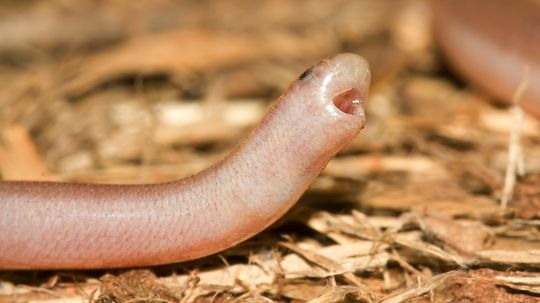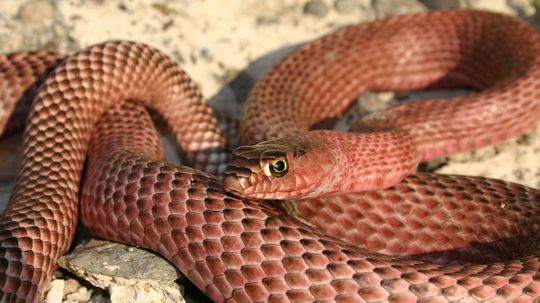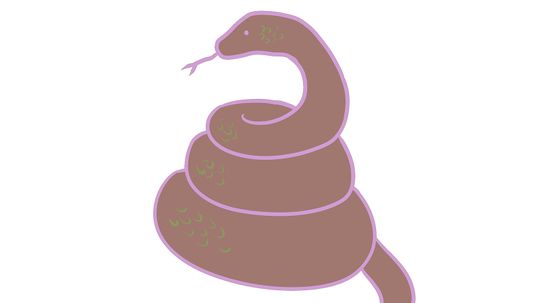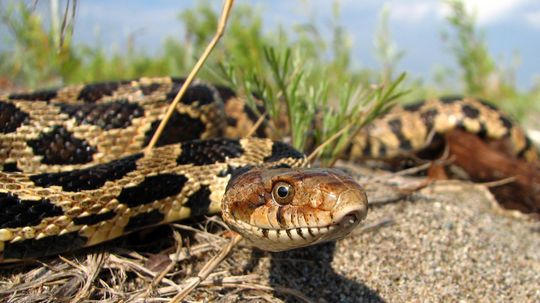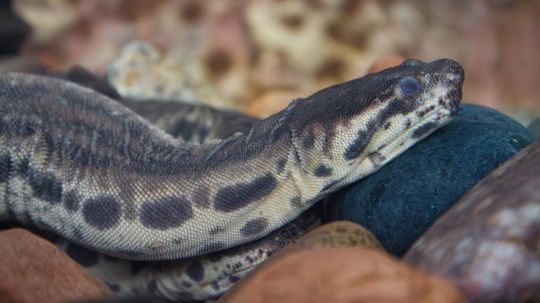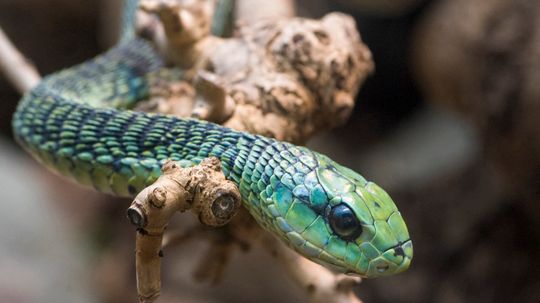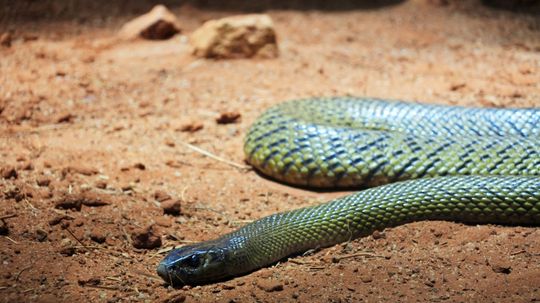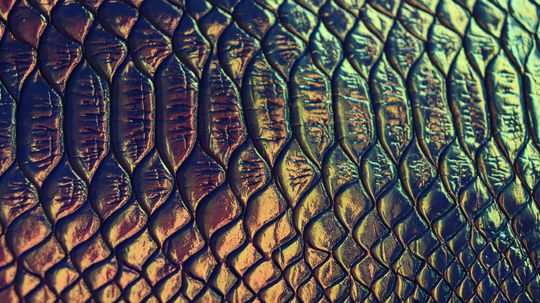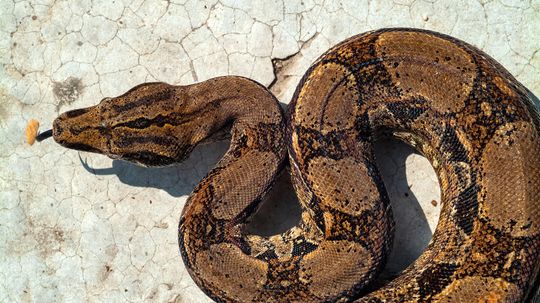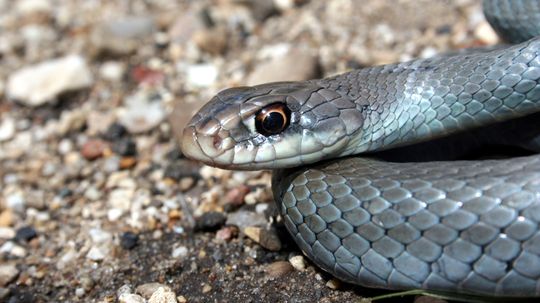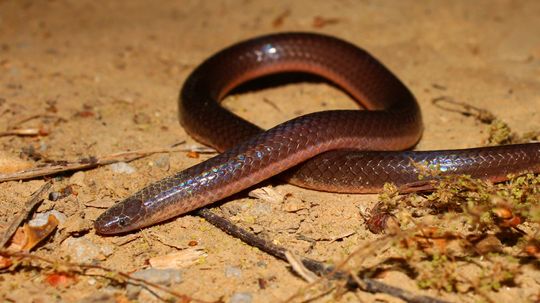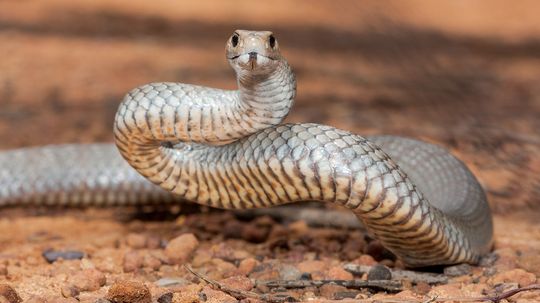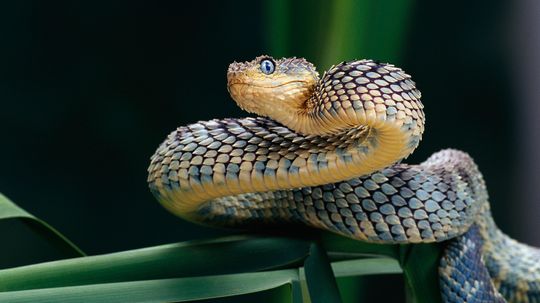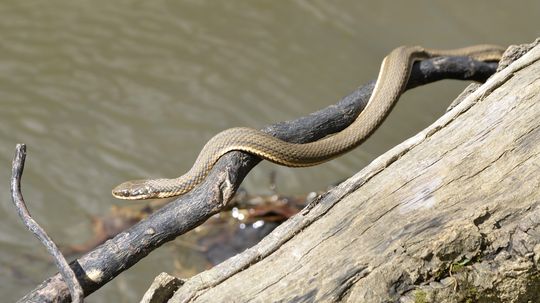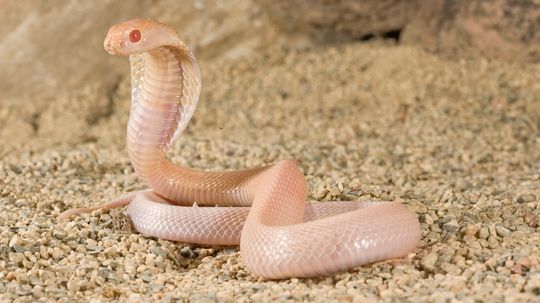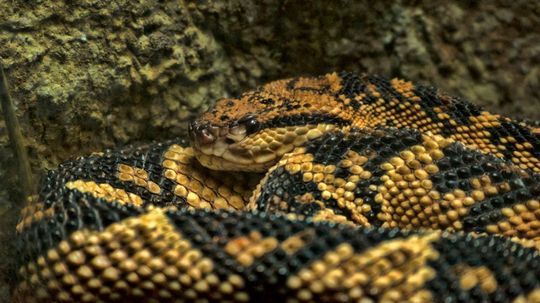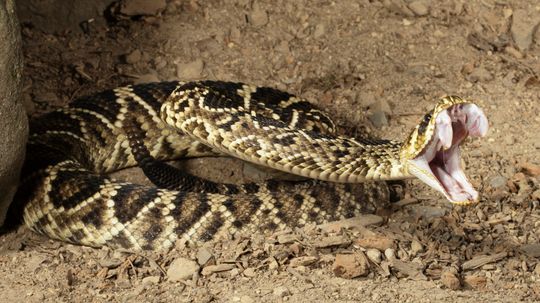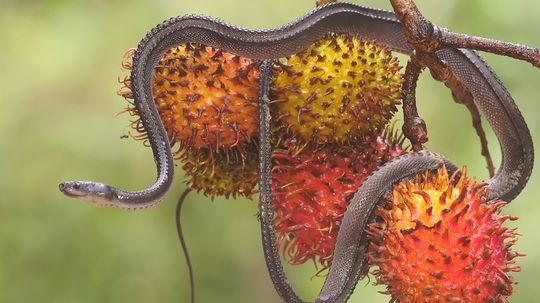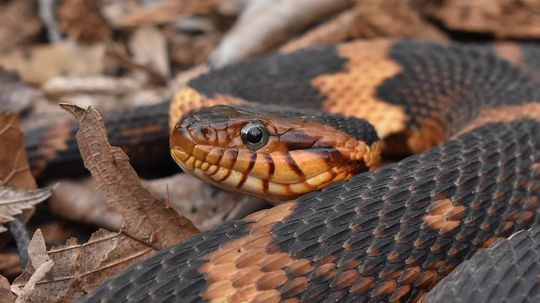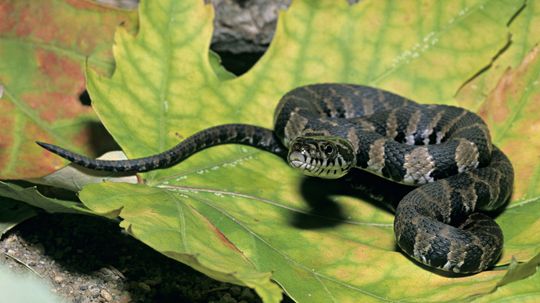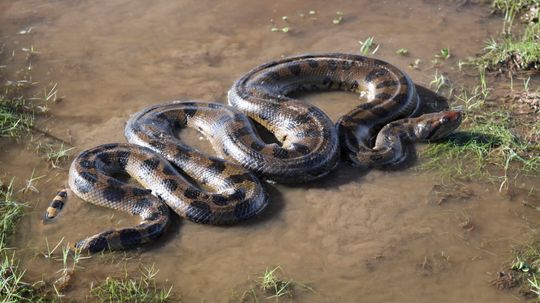Reptiles
Reptiles are cold-blooded vertebrates that have scales layered over their skin. Common reptiles include lizards, snakes, alligators and crocodiles.

What Do Alligators Eat? Pretty Much Anything They Want
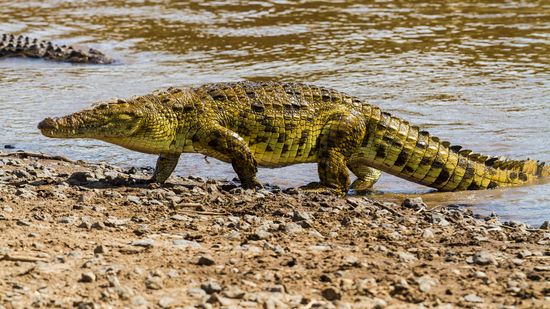
Nile Crocodile: Giant, Vicious and Surprisingly Social

So, the American Alligator Can Climb Trees ... How Terrifying
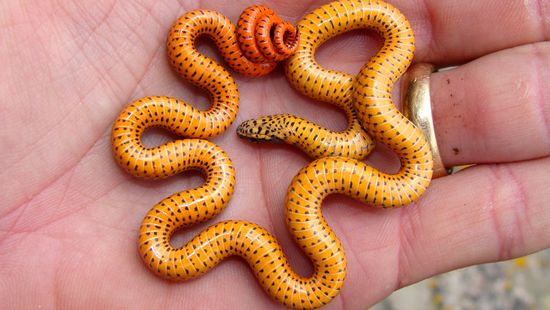
10 Cutest Snake Species That Have Us Squeeing
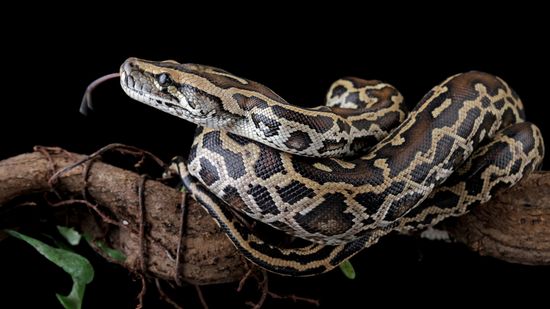
Python vs. Anaconda: Comparing Snakes and Software Languages
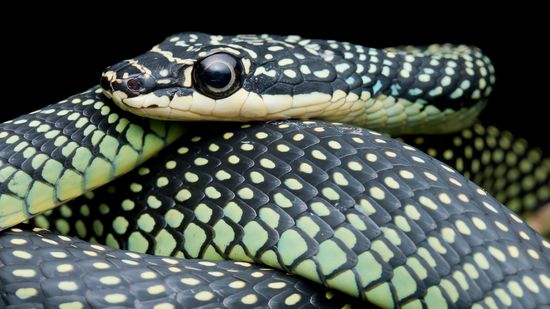
Paradise Flying Snake Truly Falls With Style

A Giant Tortoise Lives in the 'Galápagos of the Indian Ocean'
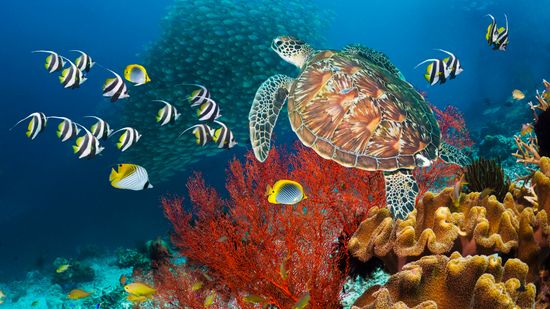
Green Sea Turtle: Named for Its Fat, Not Its Scales or Shell
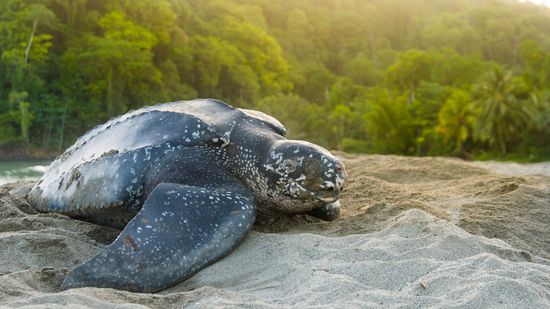
The Leatherback Sea Turtle Is the Size of a Small Car
Learn More / Page 3
Today, we’re going to explore one of the smallest, most secretive snakes on the planet: the blind snake.These tiny snakes live underground or under leaf litter, and they've evolved to thrive in some pretty unique environments.
By Zach Taras
The coachwhip snake is one of the fastest and most agile reptiles you'll find slithering through the wilds of North America. With long, slender bodies and incredible speed, these snakes are often called whip snakes due to their whip-like appearance and swift movements.
By Talon Homer
Maybe you're out in the wild and trying to identify some scat on the trail, or you're the new owner of a pet snake. Maybe you're just a curious sort. Either way, you're wondering, "What does snake poop look like?"
By Zach Taras
Advertisement
The fox snake is often misunderstood, but it plays a vital role in its ecosystem. Fox snakes are large, nonvenomous and native to the Great Lakes region, where they help keep rodent populations in check.
By Mack Hayden
The elephant trunk snake is one of the most unusual reptiles out there. Native to Southeast Asia, this fully aquatic snake is known for its distinctive appearance, with loose, baggy skin that gives it a texture reminiscent of an elephant’s trunk — hence the name!
By Talon Homer
Native to Sub-Saharan Africa, the boomslang snake is known for its remarkable agility, bright green coloration and potent venom. Despite being one of the few snakes capable of delivering a fatal bite to humans, this tree snake is timid and generally avoids confrontation.
By Talon Homer
The taipan snake is one of the most venomous snake species in the world, with an intimidating reputation and an arsenal of potent venom.
By Marie Look
Advertisement
The rainbow snake (Farancia erytrogramma) - sometimes called an eel moccasin or red-lined snake - is a nonvenomous snake. It has vibrant coloration and a specialized diet. Humans rarely see rainbow snakes (despite their striking appearance) because they spend much of their lives hidden in aquatic habitats.
By Yara Simón
The boa snake captivates reptile enthusiasts and researchers alike with its size, behavior and unique adaptations. Native to Central and South America, the large and heavy-bodied snake occupies a wide variety of habitats, from rainforests to arid regions.
By Marie Look
Known for its striking blue coloration and incredible speed, the blue racer snake is found primarily in the Midwest. These snakes are nonvenomous and play an essential role in their ecosystems, helping to control populations of small mammals and other prey.
By Zach Taras
The worm snake might be one of the most elusive and curious creatures you've never seen. These small, fossorial snakes spend most of their lives underground or hidden in leaf litter, making them one of the more mysterious members of the reptile world.
Advertisement
The tiger snake, known for its distinctive banding and potent venom, is among the most venomous in the world. Found across various regions of southern Australia, including several offshore islands, tiger snakes have adapted to a wide range of environments, from wetlands to forests.
The pine snake is one of the most interesting and robust reptiles you'll find slithering through the pine woods and sandy soils of North America. Belonging to the species Pituophis melanoleucus, these nonvenomous snakes are known for their large size, powerful build and distinctive hissing sounds when threatened.
By Zach Taras
Eastern brown snakes are among the most notorious venomous snakes in Australia. Known for their speed, agility and highly potent venom, these snakes are responsible for more snake bites in Australia than any other species.
By Zach Taras
Vipers are venomous snakes that belong to the scientific family Viperidae, which includes hundreds of species spread across multiple continents. Known for its potent viper venom, retractable fangs and deadly strikes, the viper snake family has evolved to thrive in diverse environments.
By Marie Look
Advertisement
Today, we're going to dive into the watery world of one of North America's most fascinating reptiles: the queen snake.
By Mack Hayden
An albino snake will stand out in its natural habitat. Unlike their non-albino counterparts, albino snakes have a genetic mutation that affects the production of melanin, the pigment responsible for the typical coloration in animals. This lack of melanin results in the distinctively pale or white skin and pink or red eyes that are the hallmarks of albinism.
By Yara Simón
The bushmaster snake, belonging to the genus Lachesis, is one of the most remarkable and intimidating reptiles in the Western Hemisphere. As one of the longest and largest venomous snakes in the world, the bushmaster has earned a fearsome reputation.
By Zach Taras
Diamondback snakes, particularly the western and eastern diamondback rattlesnakes, are some of the most iconic and recognizable venomous snakes in North America. Known for their distinctive diamond-shaped patterns and rattling tails, these snakes strike fear in many but play crucial roles in their ecosystems as both predators and prey.
By Yara Simón
Advertisement
Grass snakes are nonvenomous reptiles with distinctive markings. This common snake plays a crucial role in maintaining healthy ecosystems by controlling amphibian populations and other prey.
By Yara Simón
The dragon snake (Xenodermus javanicus) is an elusive creature. Native to Southeast Asia, these snakes have distinctive rough, keeled scales and an almost mythical appearance, reminiscent of dragons.
By Yara Simón
The name "black snake" might sound straightforward, but it actually covers a range of species found across the globe. These snakes come in all shapes and sizes, from small and sleek to long and powerful, and they thrive in habitats as diverse as wetlands and deserts.
The banded water snake is one of the most fascinating aquatic reptiles you'll find slithering through the waterways of the southeastern United States.
By Mack Hayden
Advertisement
Have you ever seen a snake in or near a river or pond? It was probably a water snake! These slithery swimmers are easy to spot anywhere the world gets a little wetter, particularly near freshwater.
By Mack Hayden
When you think of the word "anaconda," it probably conjures up images of massive, slithering serpents lurking in the waters of South America, right? Well, that's not too far off! The anaconda snake, scientifically known as Eunectes murinus, is the stuff of legends.
By Mack Hayden
